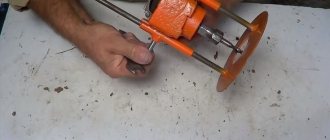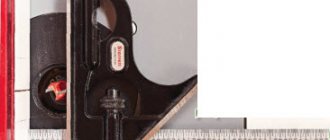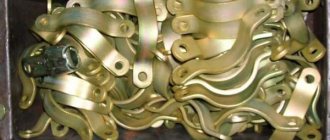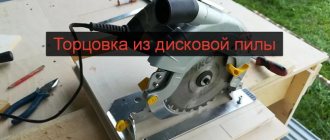It is difficult to name an industry that does not use metal and products made from it, for the production of which a rolling mill is actively used. Metallurgical enterprises today place quite high demands on equipment. That is why modern industrial machines, in particular rolling mills, differ significantly from the models that were produced earlier.
Rolling mill for the production of corrugated sheets
Purpose
Metal rolling machines are mechanical installations designed to create metal products by deforming raw materials in roll devices. The equipment allows us to produce various types of products:
- Long products. These include rods and strips of various geometric shapes, as well as shaped parts, spring and rhombic.
- Special purpose profile. Metal products in the form of angles, channels, I-beams, as well as combined blanks with a variable cross-section.
- Rolled products in the form of thin sheets up to 4 mm, as well as thick sheets more than 4 mm.
- Pipe profile with connection using welding and seamless joints.
Rolling machines for profile pipes
Rolling machines, which can be used to produce profile pipes, are divided into three types by experts.
- Roll bending is a machine that is used for deforming rolled sheets. Most often, this unit is used for the manufacture of thin-walled parts. For example, ebbs or gutters.
- Three-roll machines - these devices allow you to deform not only sheets, but also pipes. The equipment is also used to process profiled steel. The power of this equipment is determined by the downforce generator. If the machine is powered by a hydraulic drive, then it can even deform T-guides.
- Machines with four rollers are the most powerful unit of this type. Such equipment allows you to produce even a ring profile. These are the machines that are used in industrial enterprises with mass production.
Design and principle of operation
The rolling press consists of three main parts:
- The cage is working. The design of these elements includes rolling rolls, installation plates, a base frame, and wiring.
- Electric motors for transmitting movement to working elements.
- Mechanisms of distribution and transformation of motion. Consists of a spindle, couplings and gears.
The units differ in the number of stands and work roll sizes:
- Machines for thick metal have up to two working compartments with rollers ranging from 3 m to 5.5 m in length. In addition, vertical rollers can be installed, which are used for processing side edges.
- Broadband equipment contains up to 15 stands, rolls have a length of up to 2.5 m.
- Universal rolling presses consist of 5 compartments, and the length of the shafts is up to 1.5 m.
In industry, there are three methods for processing metal raw materials until they acquire the required geometric shape:
- In the first case, a rolling device is installed on the casting unit, and the initial contour of the part is obtained until complete crystallization. The disadvantage of this method is the need to maintain a high temperature until the end of processing, as well as additional precise running-in.
- As a result of rolling through furnaces with temperatures inside the chamber up to 1350 C, the edges are independently welded. At the exit of the equipment, a finished pipe profile is obtained.
- The third method involves manufacturing parts at a workpiece temperature corresponding to the environment. To prevent defects, the units use a large number of rollers that rotate in the opposite direction.
Making a rolling machine with your own hands
For a profile pipe, you will need to make a small machine with your own hands, which differs significantly from industrial installations in size. This can be done in everyday conditions if there is free space for the machine.
It can be noted that a homemade machine can allow you to produce parts of any complexity. With its help, you can quite easily make wire of any diameter, cut sheet metal, which provides for the roofing of any roof, as well as many other parts that are often in demand in everyday life.
First, you will need to select suitable drawings so that you can get a homemade rolling machine. After this, you need to prepare its components, namely:
- a pair of powerful stands made of strong metal;
- a steel rod whose diameter will be at least 5 cm;
- top plate with M10 nuts;
- two gears of the appropriate size;
- gear;
- springs and stops;
- as well as bronze bearings and bushings.
Once you have all the components in stock, you can begin to manufacture a working machine, which will be sufficiently mobile to move:
- Using bolts, a kind of working cage is assembled from racks and a metal plate.
- Two working shafts are mounted to the same racks. They must first be turned from a previously prepared steel rod. They also need to be hardened to obtain improved metal strength.
- The lower shaft is mounted between the racks using prepared bushings and bearings. The upper shaft is mounted on special slides and is a movable element of the machine. The upward movement of the sliders is limited by stops.
- Continuous compression of the two separate shafts is provided by a spring, which keeps them under constant tension. It is attached simultaneously to the plate, the bases and the directly movable upper shaft.
Important: to ensure the operation of such a machine, synchronous rotation of the working shafts is necessary. You can solve this problem using a gear transmission, which transmits torque to a gear mounted on the lower shaft. Thus, using the handle you can start the device into operation.
The installation made in this way is manually driven. It requires continuous rotation to operate. If the manual mechanism stops, then the shafts will accordingly stop rotating. This creates a universal device on which you can change components and thereby change the profile suitability of the machine.
Specifications
Rolling machines have characteristics that distinguish them from analogues:
- the type of profile produced in a particular installation can be pipe, section, as well as thin and thick sheet;
- the range of metal thickness intended for rolling is from 0.4 mm to 200 mm;
- necessary raw materials for rolling;
- performance indicator, the choice of machine before purchase, as well as the preparation of raw materials, depends on this factor;
- number of working cells with rolls for the required profile;
- the diameter of the working shafts for rolling, as well as their useful length;
- rated voltage - 220 V / 380 V;
- the power indicator of the electric motor used is from 2.2 kW and above;
- assembled installation dimensions;
- total weight of all equipment in the complex;
- presence of reversal in the rolling mill.
Rolling machine
Pros of a homemade device
Ultimately, everything you need to make such a universal device can be purchased at a low cost at any hardware store, or you can select the necessary components from old, long-forgotten things, as well as select drawings. In any case, the price of such a machine will very quickly pay for itself, since it can produce parts of any complexity with minimal costs for consumables.
Important: renting a rolling machine will cost a tidy sum, which is why you can place ads and make good money from your device.
The work done pays off quite quickly, since you can produce any parts. Here is just a small list of them:
- professional pipes;
- metal guides for profiles for drywall;
- coverings for standing seam roofing;
- elements for metal siding;
- metal sheets of square and rectangular shape;
- additional fastenings for siding;
- wire for electrical wiring.
All these homemade products will be useful to you when building a new house or renovating it. As practice shows, homemade sheet bending machines are extremely in demand, since their design does not require complex manufacturing, but at the same time allows the production of a lot of useful and necessary parts.
Video: DIY rolling machine.
Varieties
Based on the number of rolls located in the working stand and their placement, rolling machines are divided into the following types:
- double-roll - the design has paired mechanisms for pressing, which can rotate in different directions;
- three-roll - contain three shafts in each stand;
- four-roll - consist of two pairs of working parts;
- multi-roll - have a design of 4 or more rolls, and in universal ones they are used in a vertical position, sometimes they are installed in the spaces between horizontal ones;
- rolls mounted at an angle to the surface of the metal workpiece.
Rolling presses are distinguished by the location of the stands:
- equipment with working mechanisms arranged in one line is called linear;
- in stepped installations, the stands are installed in several lines parallel to the main flow;
- equipment for continuous and semi-continuous rolling; with the help of such machines, industry achieves high productivity.
Depending on the type of product produced during the process of pressing blanks, installations are divided into the following types:
- Crimping equipment. Allows the production of steel ingots weighing up to 25 tons. A piece of square or rectangular cross-section comes out of the working stands.
- Continuous pressing machines for blank material. As a result of the operation of such mechanisms, steel plates are modified into a special profile and sheets.
- Rail and beam machines roll blooms into rails, channels and large beams. In industry, step and sequential mills are used.
- Sectional machines are used to produce metal parts of different grades.
- In the process of manufacturing wire, wire mills are installed in the workshop; they are divided into stepped, semi-continuous and continuous.
- Slabs are processed using a sheet rolling machine. Thick-sheet, wide-strip, and also with winders are used.
- Pipe rolling equipment produces seamless and welded pipes. During the rolling process, two levels of processing are used. Initially, a hollow sleeve is made from a round bar, then a pipe of the required diameter is made from it.
Rolling mill
A machine for pressure processing of metal and other materials between rotating rolls, i.e., for carrying out the rolling process, in a broader sense - an automatic system or line of machines (unit) that performs not only rolling, but also auxiliary operations:
- transportation of the original billet from the warehouse to the heating furnaces and to the mill rolls,
- transfer of rolled material from one caliber to another,
- edging,
- transportation of metal after rolling,
- cutting into pieces,
- marking or branding,
- edit,
- packaging,
- transfer to the warehouse of finished products, etc.
Classification and design of rolling mills
The main feature that defines a device is its purpose depending on the range of products or the technological process being performed.
According to the range of products, mills are divided into:
- billets, including mills for rolling slabs and blooms,
- sheet and strip,
- varietals, including beam and wire,
- pipe rolling
- rolling parts (tires, wheels, axles, etc.).
According to the technological process, they are divided into the following groups:
- foundry and rolling units (units),
- crimping (for crimping ingots), including slabs and bloomings,
- reversible single-cage,
- tandems,
- multi-cage,
- continuous,
- cold rolling.
Main equipment of rolling mill
The size of a rolling mill intended for rolling sheets or strips is characterized by the length of the roll barrel, for billets or long metal - by the diameter of the rolls, and for a pipe rolling mill - by the outer diameter of the rolled pipes.
Mill equipment used to deform metal between rotating rolls is called main equipment, and auxiliary equipment for performing other operations.
The main equipment consists of one or more main lines, each of which contains 3 types of devices:
- working stands (one or more) - these include rolling rolls with bearings, frames, installation mechanisms, plates, wiring;
- electric motors for rotating rollers; transmission devices from electric motors to rolling rolls, consisting mostly of a gear cage, spindles and couplings.
A gearbox is often installed between the gear cage and the electric motor. If each roll has its own electric motor, the transmission devices consist only of spindles. The most widespread are mills with horizontal rolls:
- two-roll (duo),
- three-roll (trio),
- four-roll (quarto),
- multi-roll.
To compress metal along the side surfaces, stands with vertical rolls, called edgers, are used. Mills in which vertical rolls are located near horizontal rolls are called universal.
They are used for rolling wide strips and I-beams with wide flanges. In screw rolling mills, the rolls are located in the working stand obliquely - at a feed angle. Such mills are used for rolling pipes, axles, balls, etc.
The number and location of working stands are determined by its purpose, the required number of metal passes between the rolls to obtain a given profile and the specified productivity. On this basis, the camps are divided into 8 types.
Single-stand mills include most blooming mills, slab mills, ball rolling mills, and cold rolling mills for sheets, strips and pipes.
In cases where it is not possible to accommodate the required number of calibers in one working stand or when high productivity is required, mills with several working stands are used. The most advanced multi-stand mill is a continuous one, in which metal is simultaneously rolled in several stands.
Continuous mills are used for hot rolling of billets, strips, sections of metal, wire, pipes, as well as for cold rolling of sheets, tin, strip and other profiles.
Rolling speeds are very different and depend mainly on the required productivity, the range of rolled products and the technological process. In crimping, billet, plate, and large-section mills, the rolling speed is about 2-8 m/sec.
The highest speeds are typical for continuous mills:
- when rolling long metal 10-20 m/sec;
- strip 25-35 m/sec;
- wires 50-70 m/sec;
- during cold rolling of sheet metal 40 m/sec.
Data on the productivity, drive power and weight of equipment of some rolling mills, which are most widespread in the USSR for the production of hot-rolled steel.
Selection principle
When purchasing equipment, pay attention to the following:
- Productivity of finished products, process automation, reliability and profile quality.
- The use of additional installations to ensure automatic rental.
Advantages and disadvantages
The advantages of the rental method include:
- increased productivity;
- wide range of finished products;
- use of software control to automate the process.
Among the negative indicators it is worth noting:
- Using rolling machines requires costs for raw materials and electricity, as well as equipment maintenance.
- After rolling, additional processing is required.
- To press the workpieces should be heated.
Improved performance
Manufacturers and price
Metallurgical enterprises use equipment from foreign and domestic manufacturers. Russian companies are trying not to give in to foreign competitors. The price of rolling mills depends on the manufacturer. The cost starts from several thousand and reaches 5–6 million rubles. The price is also influenced by productivity, type of finished profile, as well as the number of stands and rolls.
Why is this equipment needed?
The need for such a durable and reliable material as metal is constantly growing, which leads to the need to open new metallurgical enterprises and modernize existing ones. The list of industries in which metal simply cannot be used can be continued indefinitely. These are mechanical engineering, automobile and shipbuilding, construction and many others.
In order for metal ore to be turned into rolled metal of a certain grade, it is necessary to perform a lot of basic and auxiliary operations, for each of which special equipment is used. One of the main types of metallurgical equipment, which produces a sheet of metal as a result of plastic deformation from a hot billet, is a rolling mill. It is here that the bulk of the work carried out by metallurgical enterprises is carried out.
Exploitation
To ensure safe operation of the equipment it is necessary:
- install an automatic control system for the rental process;
- Before starting, check that the installation is working properly;
- moving parts and mechanisms should be protected;
- carry out maintenance of bearing connections and rollers;
- Provide areas exposed to high temperatures with additional ventilation.
Compliance with safety requirements when operating equipment will prevent possible injuries and accidents. As a result of rolling on serviceable machines, the consumer receives high quality material.
Where can I buy a rolling machine
You can get acquainted with manufacturers of rental equipment for further cooperation at specialized events (exhibitions, fairs). You can buy rolling machines from supplier companies and on the Internet.
Among the most famous sites offering such equipment, experts note the following trading platforms:
- prostanki.com. On the website you can find offers for the sale of rolling machines of various capacities, from manual ones to powerful industrial equipment;
- kovkapro.com. On this resource you can order rental equipment for small businesses and private use;
- pulsecen.ru. This site offers a wide range of rental machines. On the website you can select equipment to equip a large plant or a small factory.











